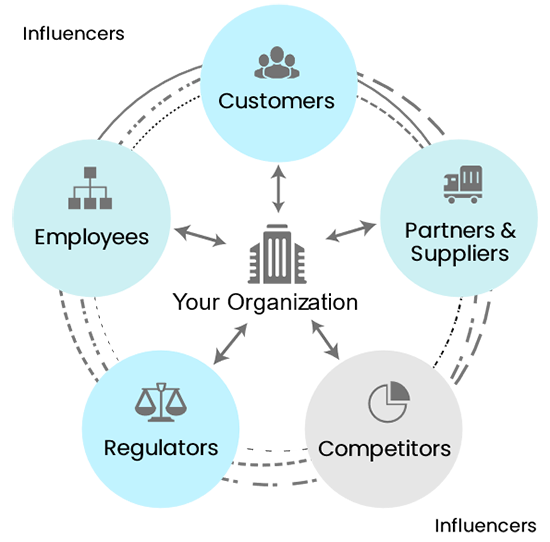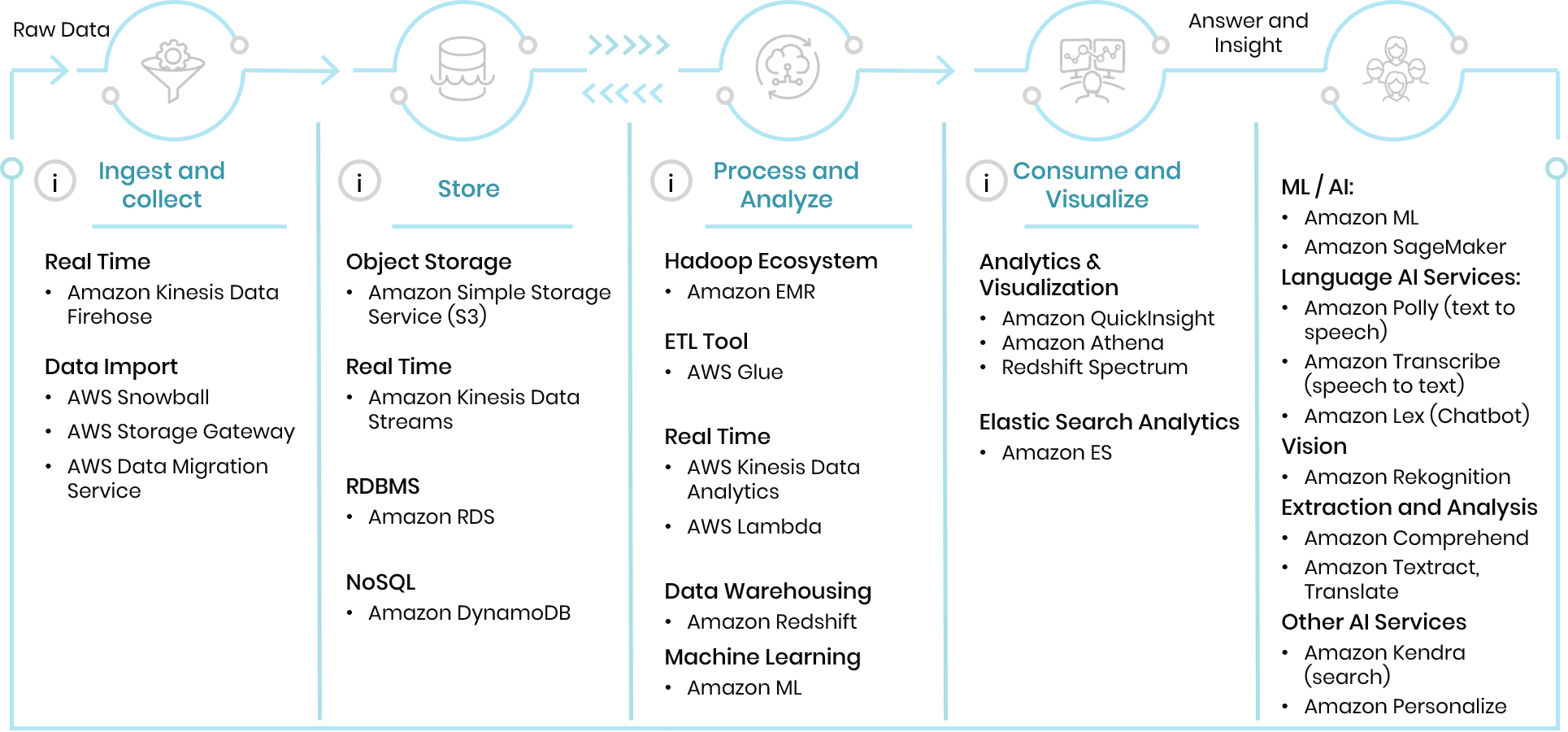Is Operational Data Store a Quick Read
Our Exercise Leaders
How Is an ODS Different from a Data Warehouse?
To better understand the deviation between an operational data store (ODS) and a information warehouse, it is best to analyze that an ODS is not a replacement or substitute for a information warehouse. While an ODS is oft an intermediary or staging area for a data warehouse, the ODS differs in that its data is overwritten and changes frequently. In contrast, a information warehouse contains static data for archiving, storage, historical assay, and reporting.
However, an ODS and a information warehouse accept much in mutual as they both import and consolidate information from disparate sources. These sources provide a key function for analysis and reporting, but information technology is important to distinguish the nuances betwixt the 2 to decide whether to deploy one integrated information solution or combine them within a tiered data compages to deliver the nigh business intelligence (BI) for your system.
The ODS in Activity
A Fortune 100 P&C insurer in the U.s. found it challenging to manage operations efficiently with slow development life cycles, limited data processing capability, and heavy dependence on Information technology. They were looking for low-toll infrastructure and analytics solutions as they migrated their existing applications to event-based architecture.
Knowing in that location was a better way, they set out to deploy an intelligent, state-of-the-fine art ODS and analytics solution. To learn how we migrated their existing applications to event-based compages, read this case study on deploying a next-gen operational information store.
What Is a Data Warehouse?
A information warehouse is a arrangement used for reporting and data assay that acts equally the primal repository of information integrated from disparate sources. Data warehouses store unstructured, structured, and semi-structured data to offer organizations a unmarried source of truth (SSOT) for long-term strategic planning.
Most data warehouses include the post-obit elements:
-
A relational database (RDB) to store large amounts of business organization data related to customers, orders, or products.
-
An extraction, loading, and transformation (ELT) solution used to set up big data for statistical analysis, reporting, and data mining capabilities.

-
Client-side visualization tools for presenting data to business users.
-
Advanced data warehouses often include sophisticated applications that generate actionable information by applying data science and artificial intelligence (AI) algorithms.
Top 5 Data Warehouse Solutions
Data warehouses can be deployed on-premises, in the deject, or in a hybrid deject environment. Most information warehouses are hosted on a deject service, which offers a more scalable and cost-effective solution to on-premises infrastructures. The most pop deject data warehouse options include:
one. Amazon Redshift is a fully managed, AWS cloud-based data warehousing platform. Redshift is an first-class option for enterprises that have an existing relational database direction organization (RDBMS), such as MySQL, PostgreSQL, and Oracle DB.
2. Azure SQL Data Warehouse is a Microsoft managed petabyte-scale service with controls to manage compute and storage independently. It is best for users looking to pause the compute layer while persisting the data to reduce operational costs in a pay-as-you go surroundings.
three. Google BigQuery is a serverless, highly scalable, and cost-effective multi-cloud information warehouse designed for interactive analysis of massive datasets. Google offers integrated machine learning and business intelligence tools, such as BigQuery ML and BigQuery BI Engine to back up advanced analytics capabilities.
four. SAP Data Warehouse Cloud is a SAAS deject solution that includes data integration, database, information warehouse, and analytics capabilities to help organizations build a information-driven enterprise.
5. Snowflake is an ANSI-standard SQL columnar shop database designed for big data analytics. Snowflake is best suited for organizations running circuitous queries, doing data analytics, or big data science.
Disadvantages of a Information Warehouse
1 of the major drawbacks of a data warehouse is its non-volatile nature, significant the data is read-but and requires cleansing. This leads to time variance, which means that data warehouse updates are performed in scheduled batches, leading to the possibility of dated reporting.
For this reason, many organizations cull to implement an ODS every bit a staging area to integrate operational data for day-to-solar day functioning.
What Is an Operational Data Store?
An operational data store is a cost-effective solution to the non-volatile nature of data warehouses. An ODS does not require the same blazon of transformations equally a information warehouse. Since an ODS can simply store structured data, the information remains in its existing schema, making it more like a data lake, which uses the schema-on-write approach.
In this sense, the ODS acts as a repository that stores a snapshot of an system's most current data, making it easier for users to diagnose problems before searching through component systems. For example, an ODS allows service representatives to immediately query a transaction to respond:
-
Where is the customer's package currently located?
-
Why is the transaction non going through?
-
What steps can I take to further troubleshoot this problem?
Since the staging area receives operational information from transactional sources in near-real-fourth dimension, the brunt is offloaded from the transactional systems past only providing access to current data that is beingness queried. This makes an ODS the platonic solution for those looking for a 360-degree view of information connected to current data records to make faster business decisions.
Disadvantages of an Operational Data Store
Traditional ODS solutions typically suffer from high latency because they are based on either relational databases or disk-based NoSQL databases. These systems just cannot handle big amounts of information and provide loftier performance simultaneously.
The limited scalability of traditional systems also leads to performance bug when multiple users access the data store at the same time. As such, traditional ODS solutions cannot provide existent-time API services for accessing systems of tape.

Is It Necessary to Combine an Operational Data Store and Data Warehouse?
In short, information technology depends on your use cases and the corporeality of data being analyzed. If your organization anticipates an overwhelming amount of client, employee, and customer account information, so an ODS solution should be integrated with a data warehouse arrangement.
Mergers or acquisitions are another factor to consider for creating a tiered architecture. To enable a central view of current and historical data across multiple source systems, combining an ODS and data warehouse will offer the nigh relevant snapshot of the entire enterprise.
 In this digital age, where the cloud promises much freedom and flexibility, a robust It infrastructure uniting cloud, analytics, and large data platforms will drive business excellence for your enterprise.
In this digital age, where the cloud promises much freedom and flexibility, a robust It infrastructure uniting cloud, analytics, and large data platforms will drive business excellence for your enterprise.
KC Sreeram,
VP and Practice Leader, Deject & Infrastructure

How Do I Deploy an ODS and Data Warehouse Solution?
Trianz' analytics squad can develop and deploy an ODS solution with minimal disruption to your overall business organisation processes. By deploying a next-gen operational data shop using Hortonworks Data Platform (HDP) on AWS EC2, Hadoop deployment on AWS Simple Storage Service (S3), Rubberband Cake Store (EBS), and AWS EC2 Instance Store, the transformation will remedy slow development life cycles, limited information processing capabilities, and heavy dependence on IT.
AWS Data and Analytics Services Included in Trianz Analytics on Deject Ecosystem for AWS

Copyright © 2021 Trianz
×
Source: https://www.trianz.com/insights/operational-data-store-vs-data-warehouse
0 Response to "Is Operational Data Store a Quick Read"
Post a Comment